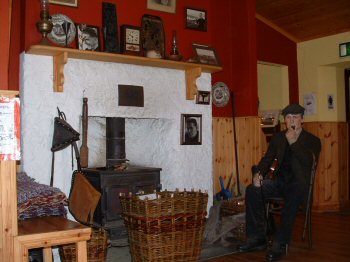Most of our place names derive from the original Gaelic and so it is of Annalong – Ath na Long or the ford of the ships. We must remember that before every river and stream …
…. was crossed with man-made bridges, the word ford referred to a shallow crossing place of the water. The name probably goes back to at least Viking times when the invaders’ long ships found some shelter here at the mouth of the river.
Early documentary evidence of the name is sparse. We are not aware of it on any document before Symington’s Survey of 1655 – though the fact that it is not a townland may contribute to that. In the Census Report of 1659 Annalong is referred to as a Quarter – a sub-division of a townland – in its case, of Moneydarraghmore. Neighbouring townlands are Mullartown ( .. of the bare or rounded summit); Moneydarraghmore ( .. of the great dark thicket or scrub); Glasdrumman ( .. of the green ridge), and Ballyveagh (.. possibly McVeigh’s townland).
There is little evidence of the Vikings ever settling here. There remains however in local dialect, a few words suggestive of Norse influence. Selk is the local name for the common seal: to ‘set allow’ is to set aflame; to ‘hain’ is to eke out; ‘holm’ refers to low-lying land close to the river. Until recently fish were normally sold by count, and the ‘long [Norse] hundred’ was used. It was equivalent to six score (120). To be more precise, the traditional method meant that there were 127 fish in the ‘hundred’.
The Vikings were also said to have introduced the clinker-built boat with the lower edge of each plank overlapping the one below, like the slates on a roof. This construction method was favoured until recent times by local fishermen and is still occasionally used.
……. More ……….
